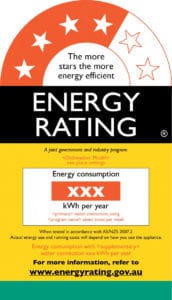Time To Read: 7 minutes
No, we’re not talking about astrology or ancient seafaring here. We’re talking about the star rating that you might see on your Value Hearing quote.
As part of our comprehensive assessment, we conduct a speech in noise test. If you’ve received this test then you’ll see a star rating on the hearing aid you’ve requested a quote on.
The star rating tell you how well the hearing aid will suit, based on its ability to assist your hearing in noise.
Just like the energy star rating, the more stars the hearing aid has, the better it is for your rated hearing loss.
There are different types of hearing aids - from invisible in the canal to discreet behind-the-ear models. The type that best suits you is dictated by the nature of your hearing loss not by how it looks.
For example, your optometrist might recommend multifocals. That could mean that the super narrow rimless glasses you had your heart set on, is not an option. Like glasses, the most important role of a hearing aid is to improve a deficit.
 We're all familiar with the energy ratings for appliances. Did you know your hearing aid quote may have rating stars too?
We're all familiar with the energy ratings for appliances. Did you know your hearing aid quote may have rating stars too?So how should you choose the right hearing aid for you?
We have a great article on how to choose the right hearing aid for you.
Your best hearing aids are ones which:
- You will be able to wear comfortably for at least four hours a day.
- Suits your hearing loss configuration and severity
- You can easily manage to clean and operate
- Best help you hear speech in quiet
- Help you understand speech in noise
- Suits your lifestyle
- Provides the best value with over-prescribing or under-prescribing
- Are affordable
Some people are disappointed to learn their preferred hearing aid style - typically an ‘invisible’ one - gets fewer stars than another type, like a behind the ear model.
While the choice is always yours, we recommend choosing the hearing aid with the greatest number of stars.
Why is Speech In Noise Testing Is Important
Only a comprehensive hearing test will evaluate your ability to hear speech in quiet and your corrected ability to understand speech in noise. Unfortunately, hearing loss corrected speech in noise testing is not part of the standard test battery and very few clinics commonly use this test.
First process in a hearing assessment is a simple beep test. This helps us discover how much damage there may be to the inner ear. The next step is to see how well you are able to hear speech in quiet.
In other words we make sounds a little louder to overcome your hearing loss. This is called your maximum speech discrimination score. It is shown as a percentage. It tells us what percentage of speech you should be able to understand, in quiet, with properly fitted hearing aids. Pretty much any decent clinic includes this testing as standard.
But that only tells half the story. A comprehensive test will evaluate how well you can hear and comprehend when there is background noise.
What’s Involved In A Speech In Noise Test
The speech in noise test consists of a number of short sentences, turned up to correct for your loss, played with increasing background speech babble with each sentence. You then have to repeat the sentences, guessing if you aren’t sure.
The tests gives you a score showing the amount of signal to noise ratio loss you suffer expressed as a figure e.g 7.5dB. Every 3 dB above 0dB, indicates that you need the speech twice as loud as the noise, compared to what a normal hearing person would require for the same situation. So to put it another way. If you had a 7.5 dB SNR Loss then you would need the speech to be about 6 times louder than the noise, to be able to understand what is being said. A normal hearing person would be able to hear when speech and noise is more or less equally loud.
This figure is important, as each person is unique and different hearing aids have different capabilities to correct for background noise.
The clinician should match your hearing loss graph (audiogram), your speech in quiet results, as well as your speech in noise results, to a hearing aid that is best suited to all three results.
Doing this ensures that the hearing aid selected for you has a better than 94% chance of being the correct first choice.

